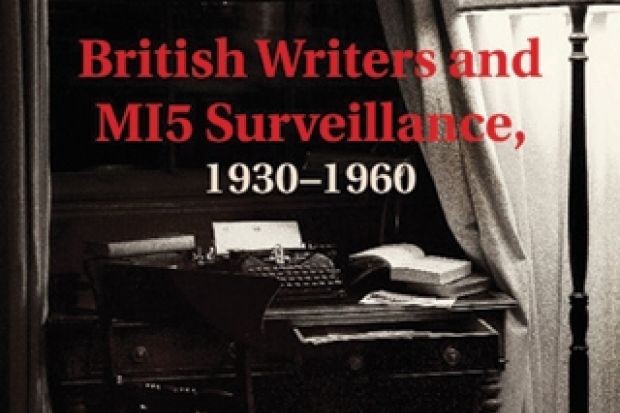Among the domestic surveillance files released over the past generation by the National Archives, a major US poet makes an unusual appearance. Shortly after the establishment of Britain’s leading spy security service, recently recounted in Christopher Andrew’s The Defence of the Realm: The Authorized History of MI5, he had been cleared of suspicion as “his sentiments are pro-ally”. Later, when the screws were turned on British fascists interned under Defence Regulation 18B, the same man was found, in 1940, to be a “leading supplier” of overseas information to the British Union of Fascists and National Socialists. That propagandist was the Modernist patriarch Ezra Pound, or, as he was known in MI5’s documentation, KV/875 and KV/876.
With an estimated peak of 40,000 members, the British Union of Fascists was roughly twice the size of the UK’s compromised Communist Party at its peak in the roiling 1930s. An online search of files held at the National Archives correspondingly shows that various shades of illiberal right - including Pound, Lord Byron’s great-grandson and pro-Nazi poet Robert Gordon-Canning, P.G. Wodehouse and many more - were of no less concern than left-wing radicals in the (admittedly unsystematic) body of extant British surveillance on potential “extremists”. In ever doing what they do to buttress the sociopolitical status quo, in short, MI5, Special Branch and other domestic security agencies were as interested in the far right as in the far left.
Smith traces the road these figures travelled from socialist politics to establishment positions in wartime government
Yet James Smith’s otherwise groundbreaking narrative pays scant attention to the surveillance of Britain’s post-First World War revolutionary right. A few words on non-“pinko” writers are offered along the way, but the book focuses overwhelmingly on case studies of far-left “fellow travellers”. That term - understood as “supporters of the USSR” or those voicing “sympathy for Soviet communism” - is generously applied in still-revealing alternative biographies of, in particular, W.H. Auden’s poetic circle, George Orwell and Arthur Koestler. None were remotely barbarians at democracy’s gate but, Smith emphasises, all that was needed - in an MI5 officer’s words to Cheltenham’s chief constable in requesting surveillance on Cecil Day Lewis, a Communist Party member between 1935 and 1938 - was suspected participation in “extremist matters”.
Like Smith, then, MI5 cast quite a wide net in what the former describes as a process of managing risk in Britain’s “security-intelligence establishment”. While he is careful not to say so, Smith seems disappointed that some spying on the leftist writers flirting with revolutionary politics went on - most indefensibly, he feels, without actually reading their work. One might well find, as Smith does, some “distaste” in the suspicion that “any association with a left-wing party” or communist-influenced organisation was “likely to be recorded by Special Branch or MI5 and spark further investigations”, but given the suspicious nature of surveillance activities, surely, it could scarcely be otherwise. Given the spike in revolutionary politics at the time, it would be rather more surprising to discover that no effort had been expended to keep abreast of what Smith himself calls “radical networks” - even bourgeois literary networks “of a highly idealistic and literary brand”.
Then as now, the security services were looking for potential extremists - in this context, membership and activism for the Communist Party - but in most cases, the results were a damp squib. Accordingly, Smith finds it notable “how little material” MI5 collected on Auden’s circle of poets, for example, with trivialities such as Orwell’s “contact with undesirable elements” typically ruling the day. Accordingly, the most perceptive part of this study is Smith’s tracing of the road these figures travelled from socialist politics to establishment positions in wartime government (Orwell, Koestler, Day Lewis) or the post-war BBC (especially Ewan MacColl and Joan Littlewood). In the case of Steven Spender’s editorship of Encounter in the 1950s, this even extended to “having his salary paid by one secret arm of the British government while being investigated by another”.
With the exception of MI5’s reinvestigative spasm following disclosure of the “Cambridge five” spy ring, in fact, the post-1930s legacies of most of the writers surveyed here shows how successful they were - in Smith’s summation of Spender’s file - in “recalibrating” their “reception within the British secret state”. For this revealing reason alone, Smith’s first foray into “the marriage of literary history and intelligence studies” should be welcomed, even if it is hard to shake the sneaking sense of a missed opportunity to broaden his investigation.
British Writers and MI5 Surveillance, 1930-1960
By James Smith
Cambridge University Press, 226pp, £55.00
ISBN 9781107030824
Published 14 March 2013
Register to continue
Why register?
- Registration is free and only takes a moment
- Once registered, you can read 3 articles a month
- Sign up for our newsletter
Subscribe
Or subscribe for unlimited access to:
- Unlimited access to news, views, insights & reviews
- Digital editions
- Digital access to THE’s university and college rankings analysis
Already registered or a current subscriber? Login




